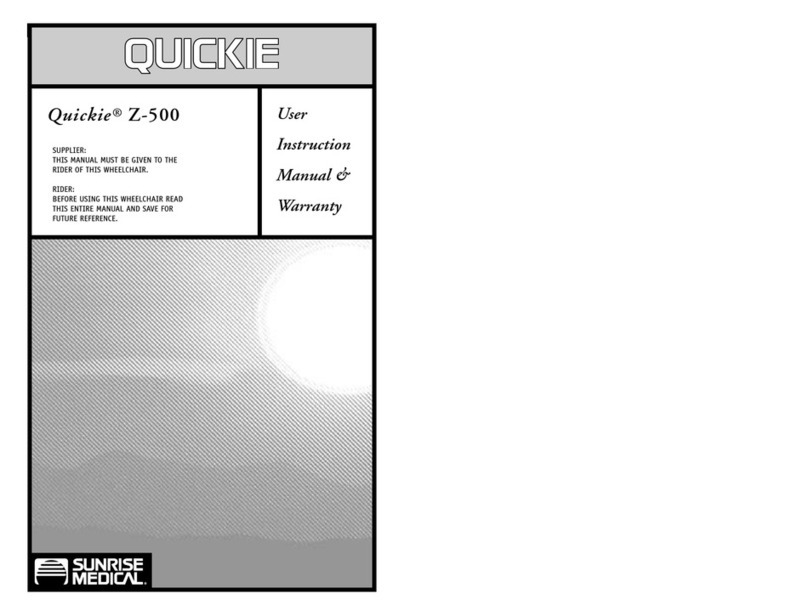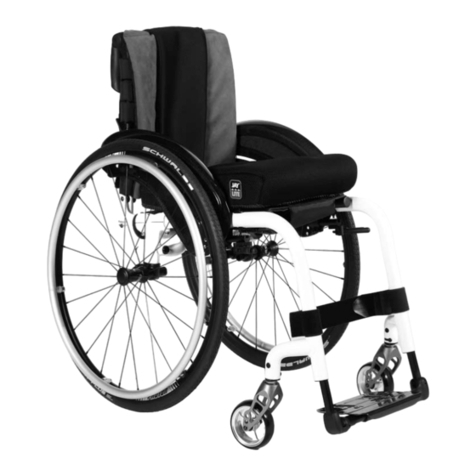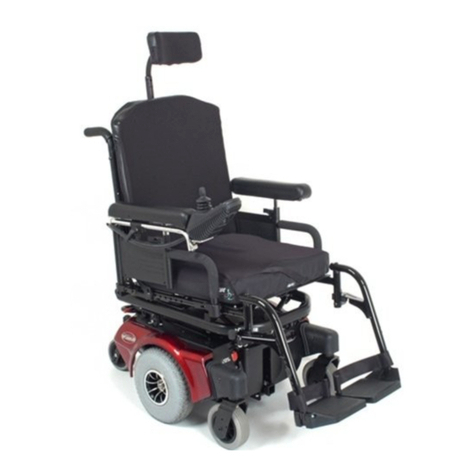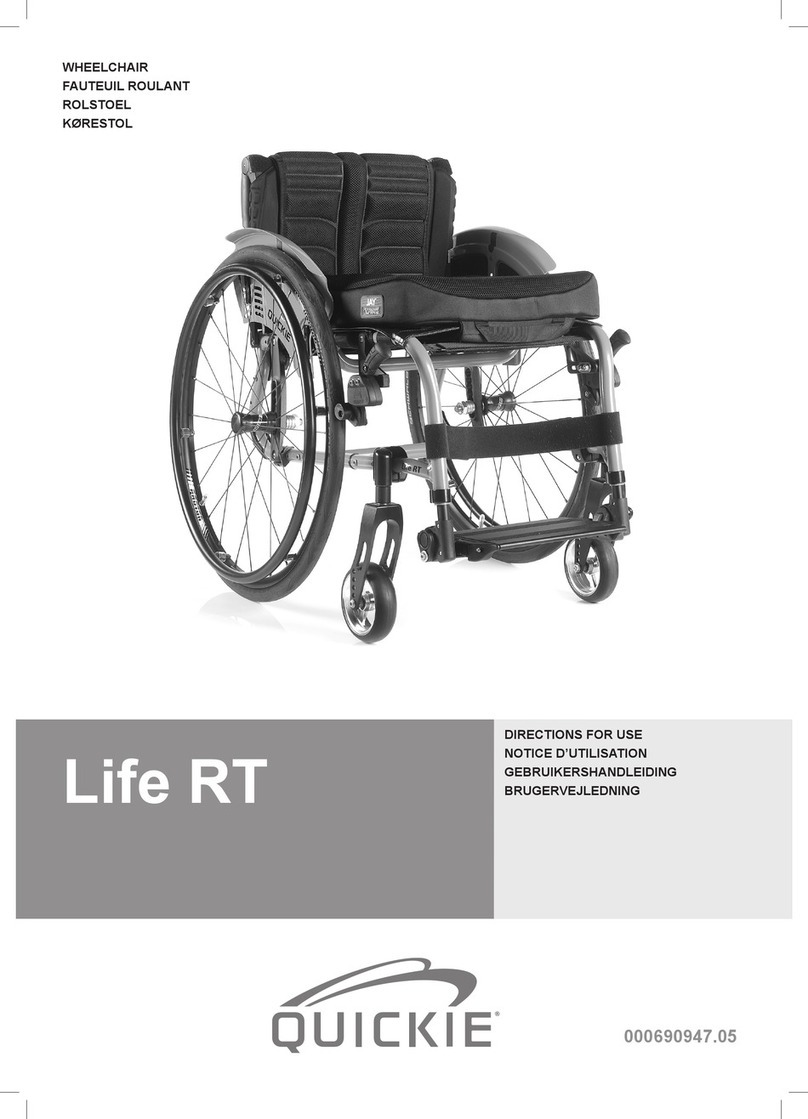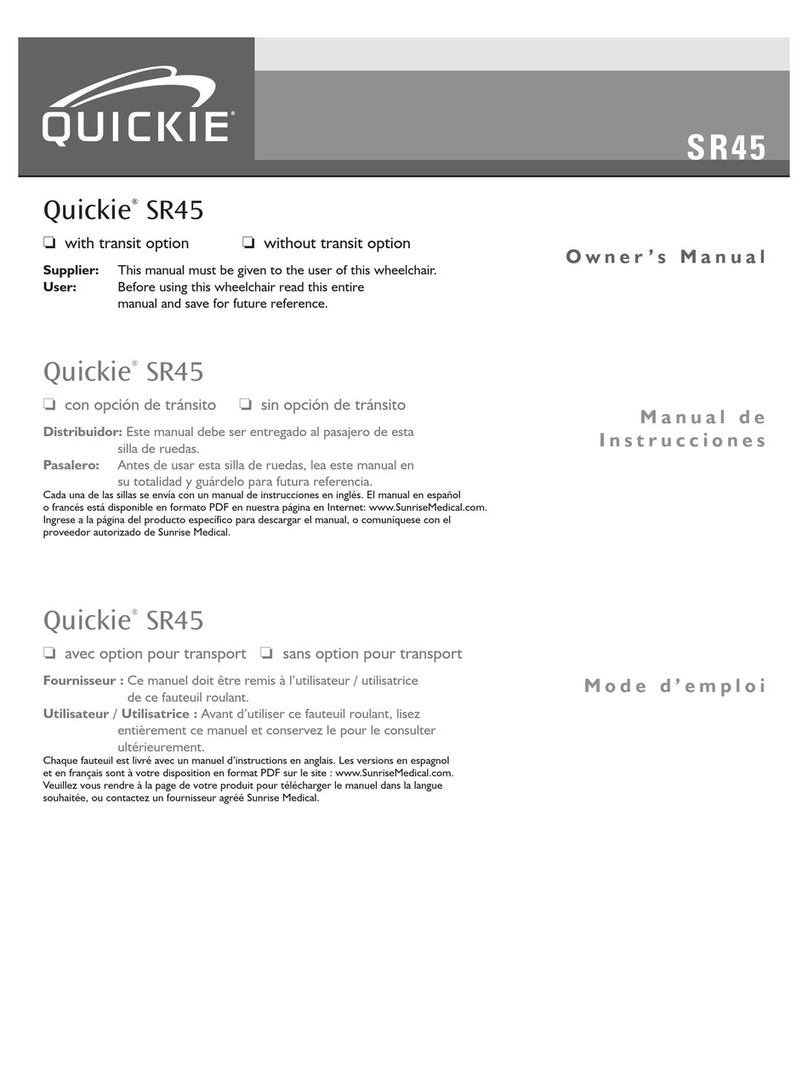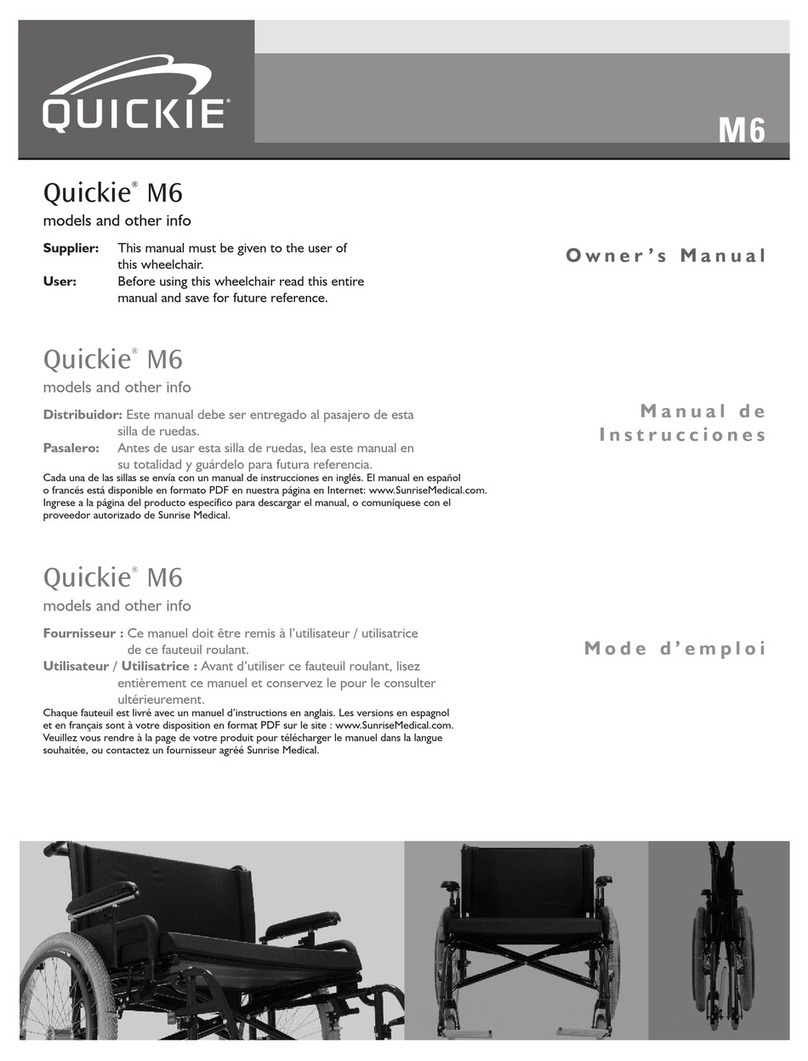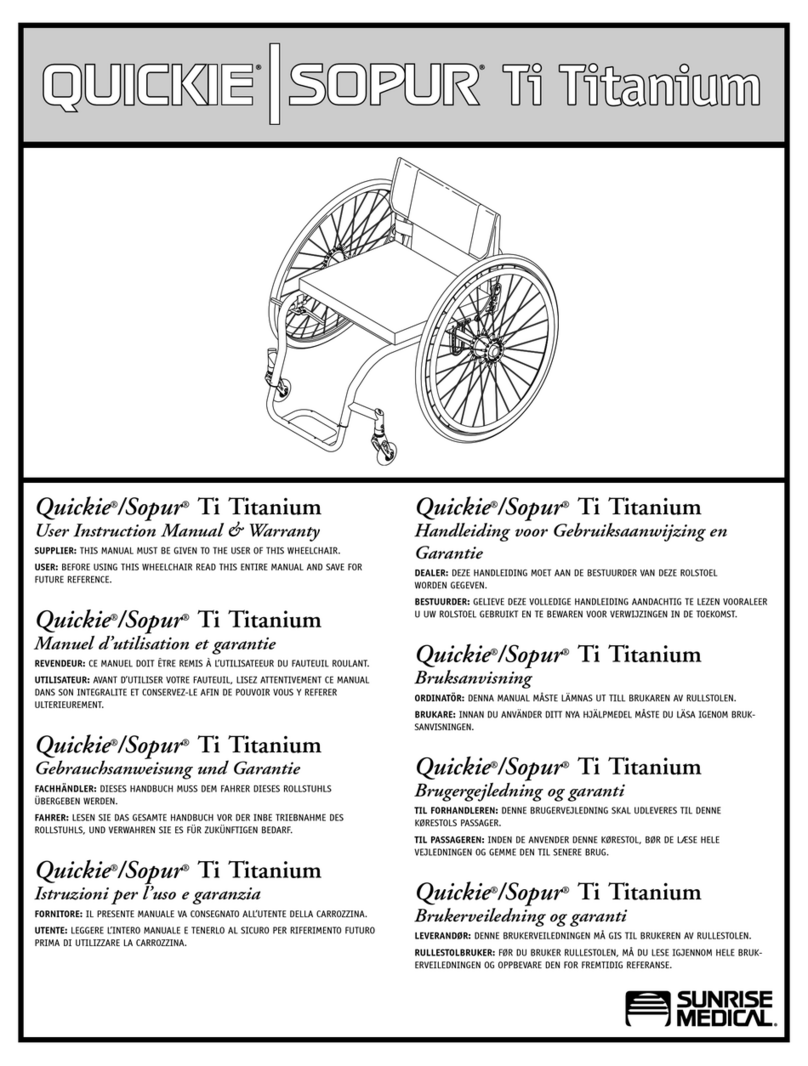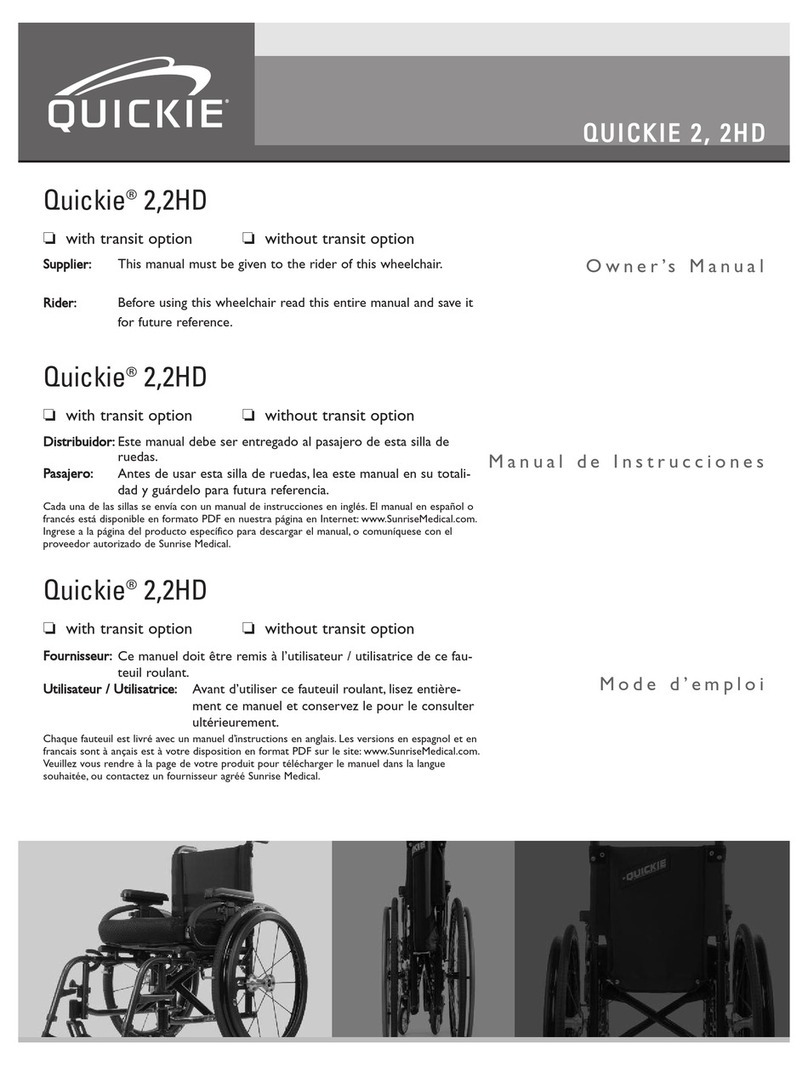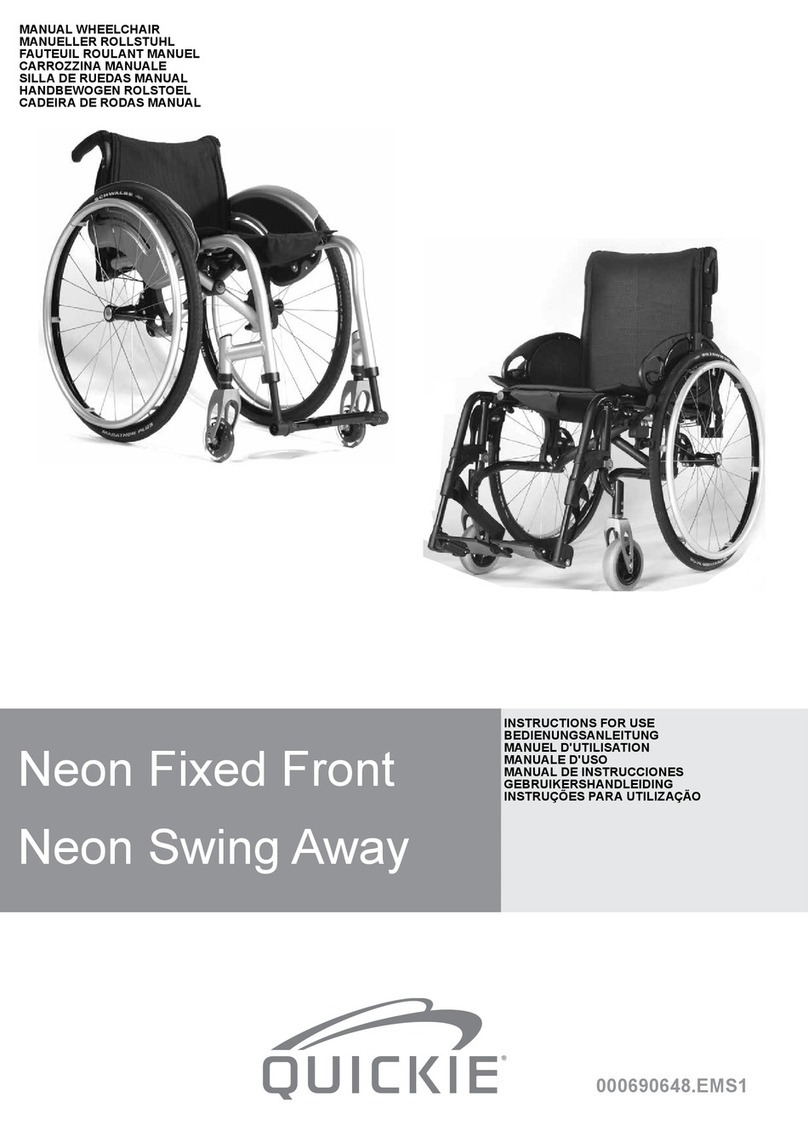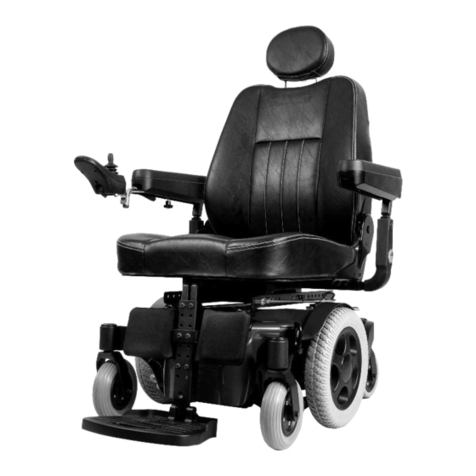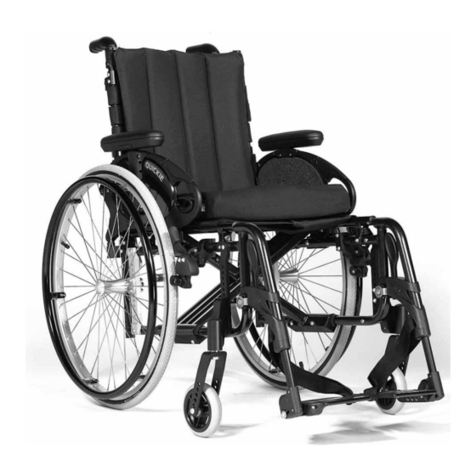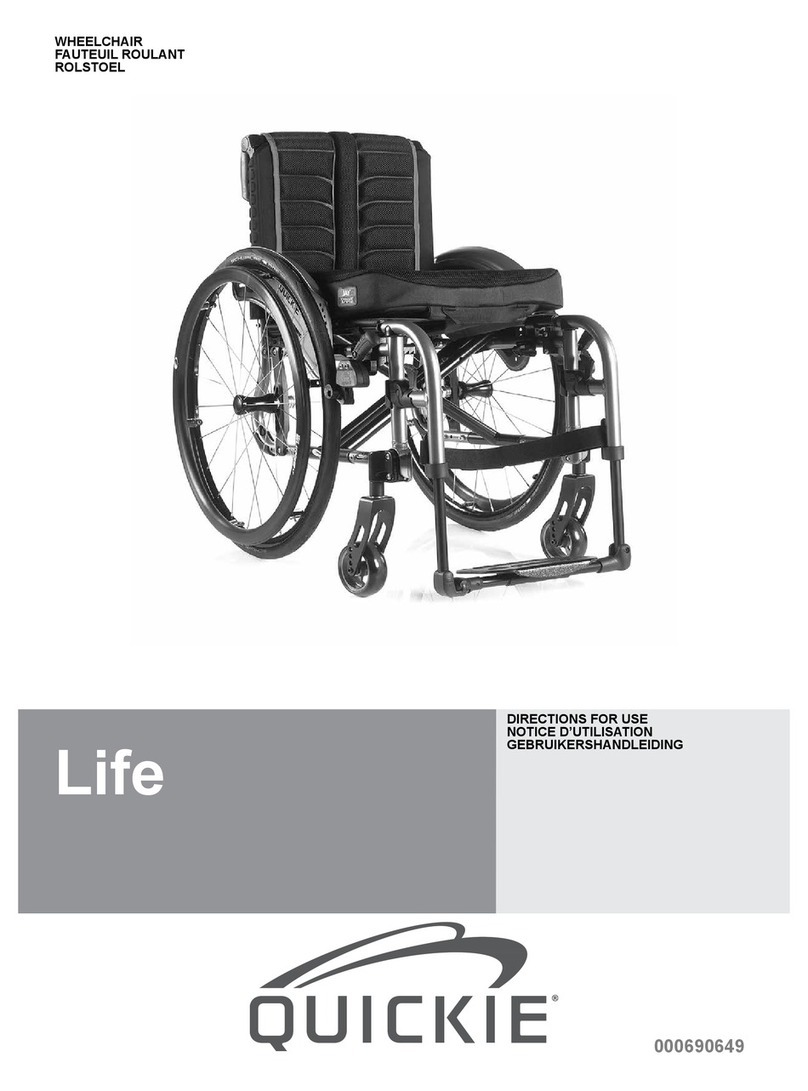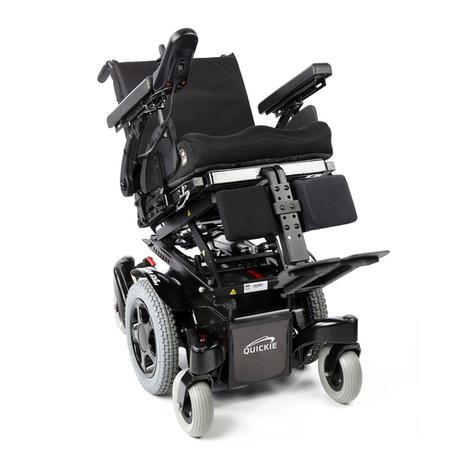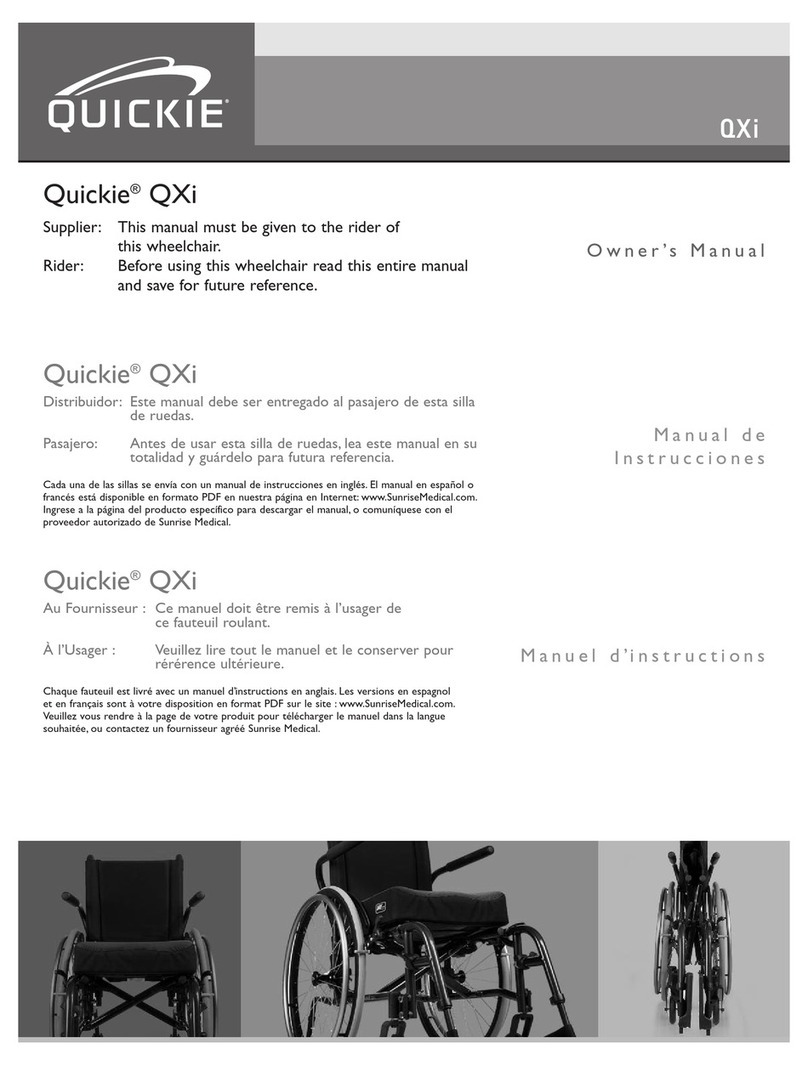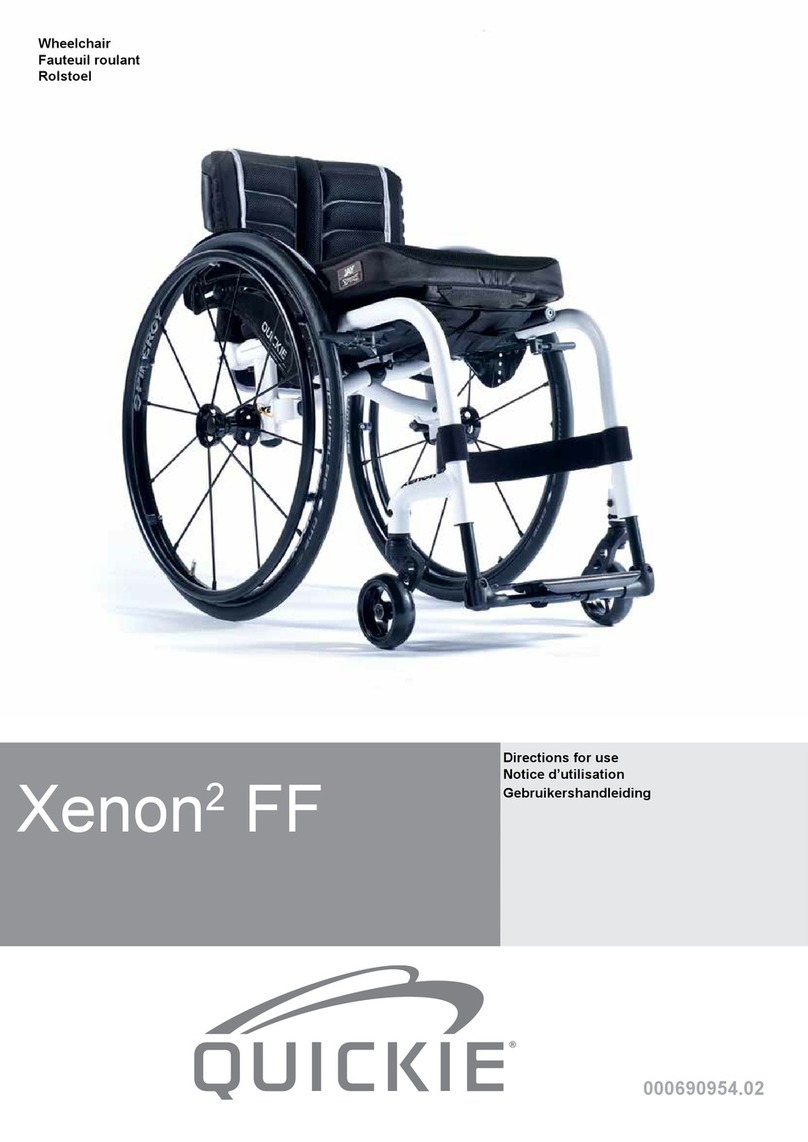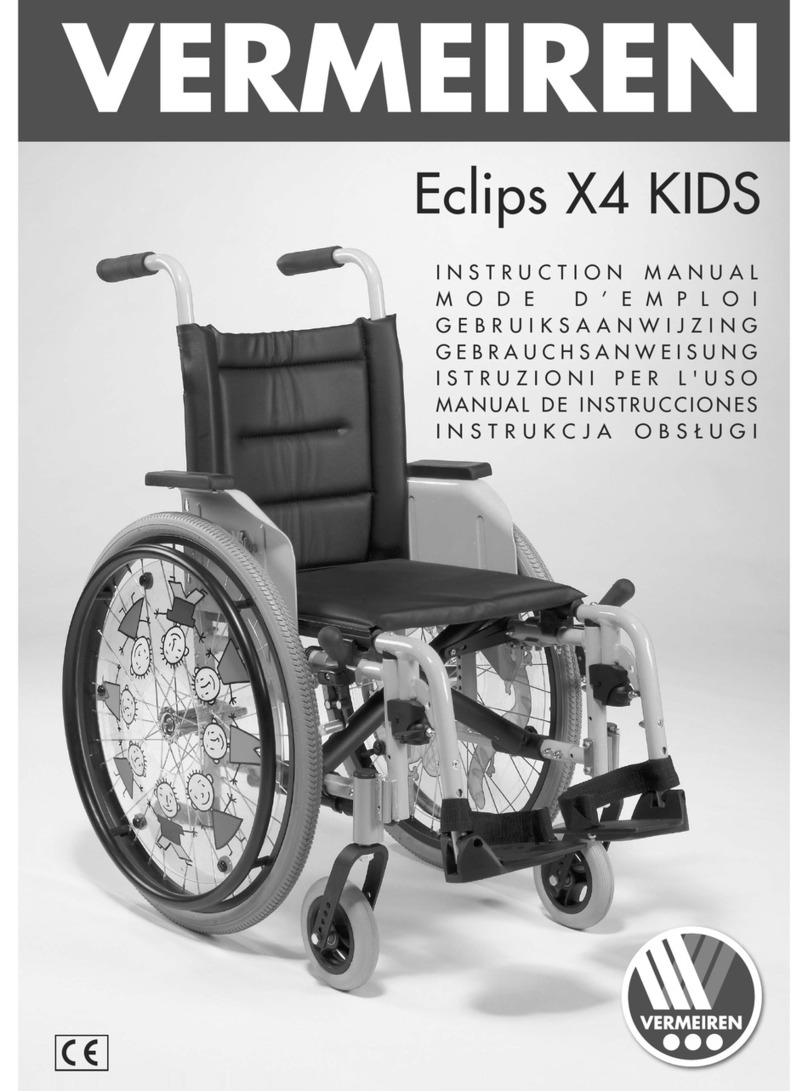Disposal and recycling information:
When this product reaches the end of its life, please take it to an
approved collection or recycling point designated by your local or state
government. This wheelchair is manufactured using a variety of
materials. Your product should not be disposed of as ordinary household
waste. You should dispose of your wheelchair properly, according to local
laws and regulations. Most materials that are used in the construction of
this product are fully recyclable. The separate collection and recycling of
your product at the time of disposal will help conserve natural resources
and ensure that it is disposed in a manner that protects the environment.
Ensure you are the legal owner of the product prior to arranging for the
product disposal in accordance with the above recommendations.
SUNRISE MEDICAL LISTENS
Thank you for choosing a Quickie wheelchair. We want to hear
your questions or comments about this manual, the safety and
reliability of your chair, and the service you receive from your
Sunrise supplier.
Be sure to return your warranty card, and let us know if you change
your address. You can also register your wheelchair at:
www.sunrisemedical.com/help-support/register-my-wheelchair.
This will allow us to keep you up to date with information about
safety, new products, and options to increase your use and
enjoyment of this wheelchair.
FOR ANSWERS TO YOUR QUESTIONS
Your authorized supplier knows your wheelchair best, and can
answer most of your questions about chair safety, use and
maintenance. For future reference, fill in the following:
Supplier:________________________________________________
Address: _______________________________________________
_______________________________________________________
Telephone:______________________________________________
Serial #: __________________ Date/Purchased: _______________
ADDITIONAL INFORMATION YOU SHOULD KNOW
No component of this chair was made with Natural Rubber Latex.
